| Srl | Item |
| 1 |
ID:
056179
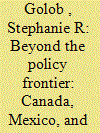

|
|
|
| 2 |
ID:
084930


|
|
|
| 3 |
ID:
094363
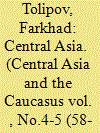

|
|
|
| 4 |
ID:
020212
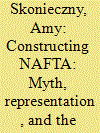

|
|
|
|
|
| Publication |
2001.
|
| Description |
433-454
|
|
|
|
|
|
|
|
|
|
|
|
|
|
|
|
| 5 |
ID:
087935


|
|
|
|
|
| Summary/Abstract |
Students of regionalism almost reflexively include North America in their lists of regions in contemporary global politics. Inevitably students of regionalism point to the integrative agreements between the countries of North America: the two free trade agreements that transformed the continental economy beginning in the late 1980s - the Canada-US Free Trade Agreement that came into force on 1 January 1989, and the North American Free Trade Agreement (NAFTA) between the United States, Mexico, and Canada, that came into force on 1 January 1994 - and the Secutity and Prosperity Partnership of North America (SPP), launched in March 2005. These agreements, it is implied, are just like the integrative agreements that forge the bonds of regionalism elsewhere in the world. We argue that this is a profound misreading, not only of the two free trade agreements of the late 1980s and early 1990s and the SPP mechanism of 2005, but also of the political and economic implications of those agreements. While these integrative agreements have created considerable regionalisation in North America, there has been little of the regionalism evident in other parts of the world. We examine the contradictions of North America integration in order to explain why North Americans have been so open to regionalisation but so resistant to regionalism.
|
|
|
|
|
|
|
|
|
|
|
|
|
|
|
|
| 6 |
ID:
075851
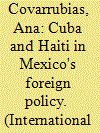

|
|
|
| 7 |
ID:
100005
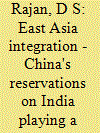

|
|
|
| 8 |
ID:
096089


|
|
|
|
|
| Publication |
2010.
|
| Summary/Abstract |
Canada has been blessed with immense energy resources; however, their distribution is not uniform. One such example is crude oil, which is found primarily in western Canada. Eastern Canada, consisting of the six eastern-most provinces (Newfoundland and Labrador, New Brunswick, Nova Scotia, Ontario, Prince Edward Island, and Quebec), produce limited quantities of crude oil, most of which is exported to the United States. Ideally, western Canadian crude oil would meet the demands of eastern Canada; however, the North American Free Trade Agreement (NAFTA) and the absence of oil pipelines means that eastern Canada increasingly relies on supplies of crude oil from a small number of oil exporting countries, many with declining production.
This paper examines crude oil production, supply, and its refining in eastern Canada. It shows that crude production in the region has reached its peak and that increasing global competition for crude oil will affect energy security in eastern Canada, either through price increases or supply shortages, or both.
|
|
|
|
|
|
|
|
|
|
|
|
|
|
|
|
| 9 |
ID:
086255
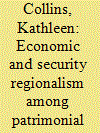

|
|
|
|
|
| Publication |
2009.
|
| Summary/Abstract |
The 'new regionalism' has spread to Central Asia; yet there has been little success in implementing most regional initiatives there. Security regionalism has had greater success than economic regionalism, even though economic initiatives would bring great benefits to the economy and population. I propose a connection between patrimonialism and regionalism. Central Asia's patrimonial leaders are driven by survival and personal enrichment, and are beholden to informal vested interests. Since economic regionalism involves liberalisation that adversely affects these actors, the result is 'virtual' economic regionalism at best. In the case of security regionalism, some regional organisations progress because they bolster patrimonial regimes, with negative consequences for democracy.
|
|
|
|
|
|
|
|
|
|
|
|
|
|
|
|
| 10 |
ID:
138369
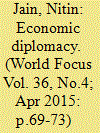

|
|
|
|
|
| Summary/Abstract |
The serenity of global peace and development can only be roped in via the unflinching commitment towards the positives of Economic Diplomacy and on the contrary the global governance should check and mitigate the concerns and devils of Economic diplomacy.
|
|
|
|
|
|
|
|
|
|
|
|
|
|
|
|
| 11 |
ID:
055023
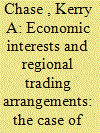

|
|
|
| 12 |
ID:
102026
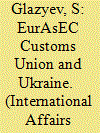

|
|
|
|
|
| Publication |
2010.
|
| Summary/Abstract |
AGAINST THE BACKGROUND of the global economic crisis, which has plunged the developed countries into a depression, we are witnessing the emergence of new centers of the world economy: China, Brazil and India. With the formation of a new technological order, they are emerging on the back of another long wave of economic growth. The world financial system is turning into a multi-currency one, and unipolar globalization is giving way to the creation of large regional economic unions. In the wake of the European Union, a huge ASEAN Free Trade Area is forming in Southeast Asia, the MERCOSUR Customs Union in South America, and NAFTA in North America. One of these integration arrangements in the Eurasian space is the Customs Union of the Republic of Belarus, the Republic of Kazakhstan and the Russian Federation.
|
|
|
|
|
|
|
|
|
|
|
|
|
|
|
|
| 13 |
ID:
138214


|
|
|
|
|
| Summary/Abstract |
South Korean President Park Geun-hye's Eurasia Initiative, put forward in the fall of 2013, was a declaration of intent to launch a mega-project encompassing not just Southeast Asia but a far greater space. The official title is "Opening and Denuclearization of North Korea through the Peaceful Prosperity of Eurasia." The Eurasia Initiative is an ambitious plan to change the fundamentals of global economy, diplomacy, and national security geography, recreate the history of "one continent," and advance global peace within one economic bloc and market. It is a "creative organization" of the global village, something not a single world leader has ever considered establishing. President Park described her plan for peaceful prosperity in Eurasia as "Resurrection of the Silk Road".
|
|
|
|
|
|
|
|
|
|
|
|
|
|
|
|
| 14 |
ID:
065254
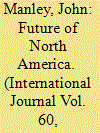

|
|
|
| 15 |
ID:
189881


|
|
|
|
|
| Summary/Abstract |
The literature on world regions is largely gender-blind. This article suggests ways in which the study of regionalism can incorporate gender analysis, based on the case of North America. It argues that this can be done in three ways: through an examination of the gendered impact of regional integration; through an examination of how gender concerns are, or can be, mainstreamed into regional policies; and through research on new forms of feminist-inspired activism that may shape regional outcomes. After applying these perspectives to the case of North America and the new Canada–United States–Mexico Agreement, it argues that despite the failure of the Canadian government to achieve the inclusion of a gender chapter, the inclusion of language around gender discrimination in the labour chapter makes the new agreement a more effective (if still limited) tool for promotion of some forms of gender equality.
|
|
|
|
|
|
|
|
|
|
|
|
|
|
|
|
| 16 |
ID:
101932


|
|
|
| 17 |
ID:
121232
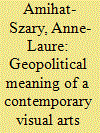

|
|
|
|
|
| Publication |
2012.
|
| Summary/Abstract |
WHY SEEK A VISUAL UNDERSTANDING OF BORDERS?
Their common border can be seen as a synecdoche of the complex relations
between Canada and the United States: not only is it the longest border in the
world (at 8,891 kilometres-5,061 kilometres on land and 3,830 kilometres
at sea), but it also represents a line where strong and soft politics and
geopolitics converge. One can say that the border not only divides the two
states but reflects their relations. Until recently, the border was considered
one of the most "benign" the world-an exceptional label, considering the border's length.1
For over two centuries, political divisions between the two
countries, inherited in part from a colonial divide in the east but also from the
outcome of frontier competition in the west, did not represent an obstacle to
everyday life in the border regions. In fact, various economic activities have
benefitted from houses built on the line in order to evade taxation, to the
more complex industrial systems, such as that of the automobile industry
in the Great Lakes region. These activities have led to the consolidation of a
number of cross-border regions, enhanced by NAFTA, which are witnesses
to both the vitality and variety of interactions along the line.2
|
|
|
|
|
|
|
|
|
|
|
|
|
|
|
|
| 18 |
ID:
090765
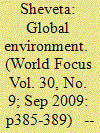

|
|
|
| 19 |
ID:
054938
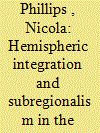

|
|
|
| 20 |
ID:
139402


|
|
|